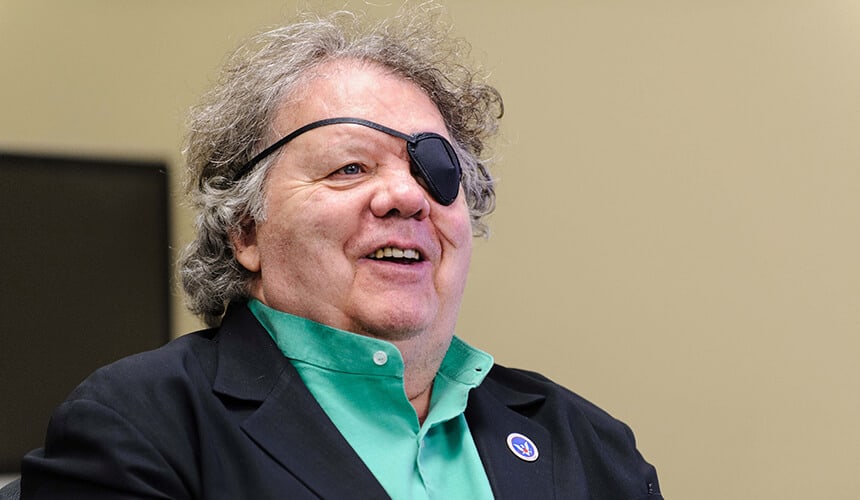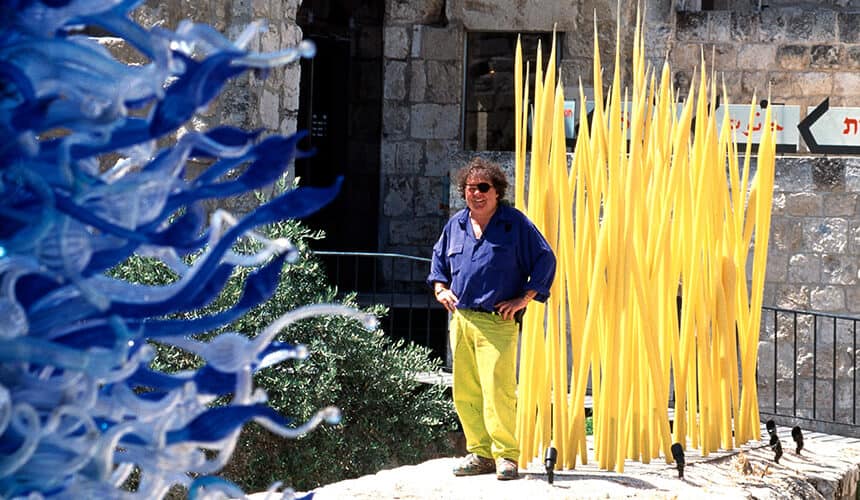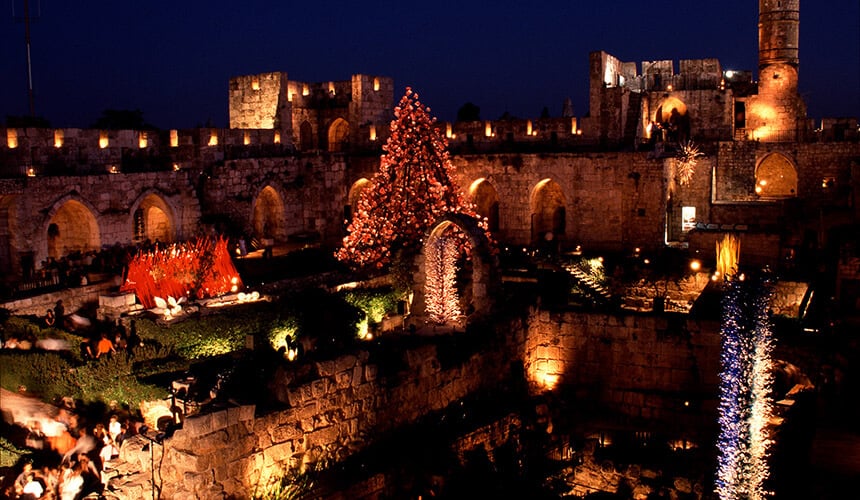Dale Chihuly
Dale Chihuly Creates a World of Wonder and Color
Sand, fire, and light. Dale Chihuly combines the first two to create his intricate art, but it’s the third — energy swirling through a transparent medium — that has captivated his imagination for more than four decades.
America’s foremost studio-glass artist, Chihuly studied first in his native Washington and then worked as a commercial fisherman in Alaska to pay for graduate school. He chose the University of Wisconsin, eagerly enrolling in the country’s first university-based glass program in 1966. He earned a master’s degree in sculpture under Harvey Littleton, who championed the concept of studio glass — that individuals, rather than factories, could produce glass art.
In the 1970s, Chihuly lost sight in one eye in a car accident, and he later injured a shoulder while bodysurfing. Because he can no longer blow glass, he translates designs from his mind’s eye to paper — often holding two dozen pencils at once — and then directs large teams to execute and install his signature pieces.
His techniques allow hot glass to form organically and present shapes, textures, and bursts of bright color. The results are a natural fit for their surroundings, many of which are botanical gardens. Art critics marvel at the scope of his creations, which have included a 15-part installation in Jerusalem and more than 2,000 pieces of glass that adorn the Bellagio hotel lobby in Las Vegas. Madison boasts its own Chihuly, The Mendota Wall, 1,284 pieces of blown glass that serve as the focal point for visitors entering the UW’s Kohl Center sports arena.
From The Park
In 1965, I put a pipe into some stained glass that I melted in my basement and blew a bubble. Since that moment I have spent my life as an explorer … That’s what I love to do.
Source: Used by permission of copyright holder.
“No single living artist has done as much for art glass [as] he has,” wrote Jim Escalante MFA1981, then chair of the UW’s Art Department, when nominating Chihuly for the honorary fine arts degree he received in 2013.
Chihuly loves a challenge, and his medium most certainly provides that. “Glass is very durable, but it’s also fragile and can break at any moment,” he acknowledges. “I’ve always tried to push the medium as far as I could in terms of shape and scale.”
With his art installed in more than 200 museums worldwide, Chihuly is on to tomorrow’s challenge. “I don’t think about how I want to be remembered,” he says. “I think about what I want to do next.”
 17° F
17° F


